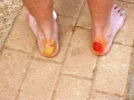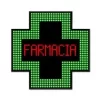Re: How to train for the Camino - practice makes perfect...
Practice makes perfect.... so be careful what you practice!!
I always liked this way of looking at practice and as a coach I find I use it a lot. This year I completed my first Camino in two legs. In June I walked SJPP to Leon and in October from Leon to Santiago. There was much that I got right in my preparation and a few things I was able to correct by the time i returned in October.
I shudder when I hear of people not practicing as much as they can before they start. Day one on the Frances is tough and is not a warm up day. In my view this is the day that the practice is for. Get past day one and things will be easier, but not getting past day one is a distinct possibility. Significant numbers of the people I met with injuries that either slowed them or stopped them could trace the start of their injury to day one. So how would I recommend training?
1. Practice by time and not distance. Build up the time you walk in your pack to the point where you can walk two eight hour days in your chosen clothes with your full pack (my pack was 10kg and for me it was fine). At some level it doesn't matter where you walk, what matters is that you put in the hours. Even a day at your local shopping mall with your pack on would do it if you can build up the hours (not using the elevators of course

). Stop for breaks and lunch as you would imagine but get the experience of a full day. Only when you walk a full day in your gear will you know where things start to hurt. Find that out before you leave for your Camino so that you can take steps. Only if you walk two days in a row will you find out what happens to a slight ache one day when it is walked on the next day. Practicing one day a week will not show you how the aches and paints and blisters multiply.
2. Shoes. I originally had boots but on my second trip I had hiking shoes. In my view boots are too much and too heavy but so many people had them. Hiking shoes were ideal. The main lesson however is on your second set of footwear. Flipflops and crocs might be great in a shower or a town stroll but they are not an alternate for hiking. I took a lightweight hiking sandal (timberland waterproof) and on days when my boots/shoes were pinching I could wear my socks and hike in my sandals. It was the single best thing I had. If your second pair of shoes cannot be worn for your main walk then the only thing you have is to walk in the shoes that hurt you yesterday. I walked with people in tears because of blisters where the only other choice was flipflops. Having both sets of footwear able to be used for walking is great. Having equipment that can gives you choices was a great lesson.
3. Clothes. Same with clothes. See what works or not as you practice. I was grateful to learn in my practice the certain underwear rubbed after a full day. Solution was to take two style of underwear and alternate the styles on days until my body was ready. Like the shoes if everything is the same style it will rub in the same places.
4. Learn to Zig Zag. Hills are tough, but its not the going up that hurts. It's the comng down. Practice coming down hills. Practice turning a down hill slop into a thousand turns like a skier. You may look silly but you will have saved your knees. You are not in a hurry so learn to come down slowly in one piece by zig zagging at acute angles. Do it even on the smallest slopes. Your knees will thank you. They are probably not trained for so much downhill work and certainly not with another 10kg on your back.
5. Poles or not. Practice, try, find out before you go. I loved my poles and think i would not have made them but find out what's right for you before you go. Poles are great for the zig zag.
6. Eating, sleeping and..... practice all these things and enjoy your practice. Practice stopping for lunch. Set up a scenario where there are no rubbish bins and work out what you need in your pack and where to be able to stop easily to eat. Same with the bathroom, imagine what you will need in your pack etc. Sleep the same. Sleep at home in your bag. Imagine there is not place for your glass of water, there is no light switch, you want to go to the bathroom in the middle of the night, you want to know where to put your valuables as you sleep. Try it one night at home. Wake up and see if you can pack your bag easily. Wash you clothes by hand after a practice walk.
7. Rain. In an ideal world have a day practice in the rain. If not imagine one. Practice a start in the rain. How did you wrap up? Practice stopping in the middle of your walk and putting the wet gear on. Where is it in your bag and so on.
8. Water. Practice drinking regularly. I used a water bladder in my pack and strongly recommend it but I watched several people on day one realise that they couldn't actually reach their water bottle behind them easily. Some always needed help. Some didn't drink enough as they only drank when the stopped. Find out what works for you.
9. Other stuff. Practice it all, why not? Have fun on your practice days. Take photos (oops where do i keep my camera? Practice getting the map out - oops where will I put my map? I want my credential stamped in this church - oops it's at the bottom of my bag etc. For me it was
Brierley guide in front left trouser procket. Iphone front right with handkerchief and loose change. Wallet in side pocket of trousers. I only figured that out by trying it.
I loved every minute of my Camino and there were tough days. However I walked with people who were in serious pain and had to miss days because they were injured or worse some had to stop. Some people were well prepared and some not at all (including one couple who had to buy their sleeping bag on the second day having not realised that the Albergues didn't provide them

). Last but not least spend hours on this site. All you need is here. Try things before you start as part of your whole Camino.
And remember...Practice makes perfect....so be careful what you practice.
Buen Camino
Mark - Singapore.


























